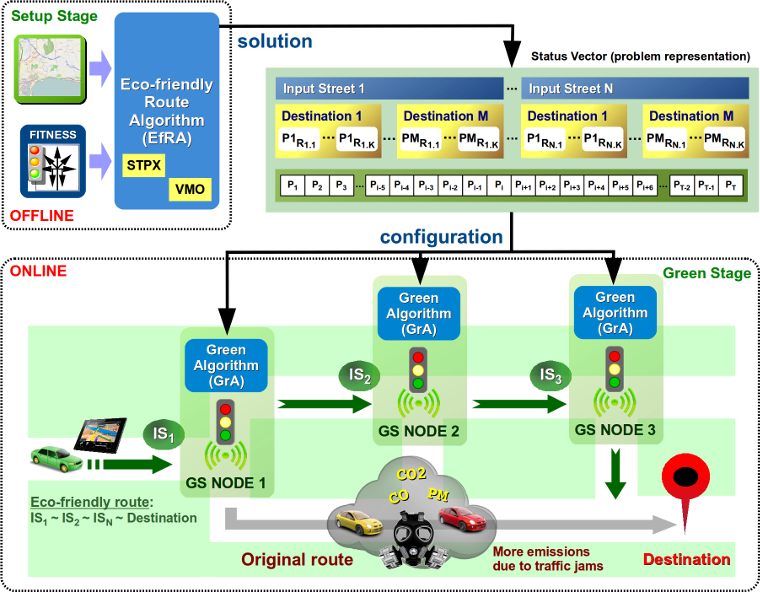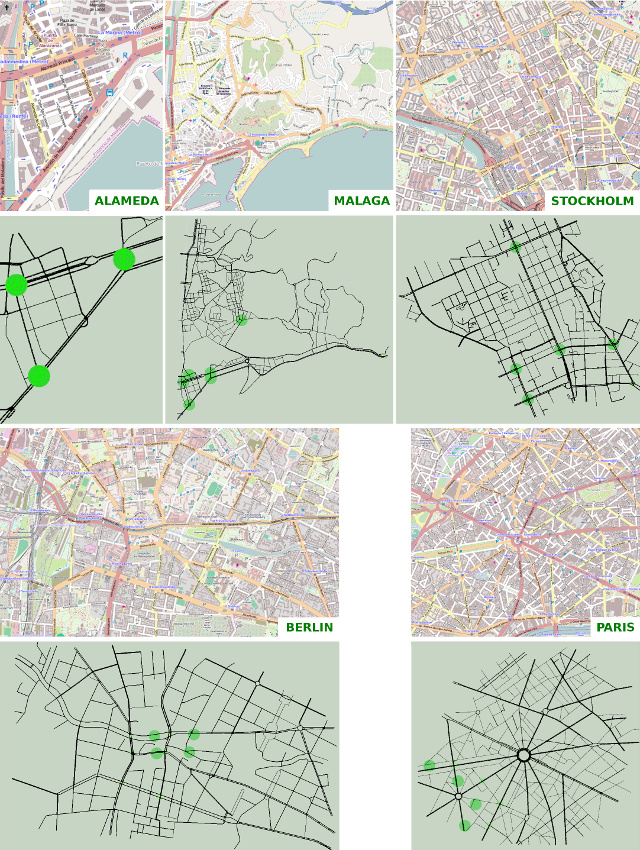Reducing greenhouse gas emissions in Smart Cities
The mobility architecture, called Green Swarm, is proposed to reduce greenhouse gas emissions from road traffic in smart cities. The traffic flow optimization of four European cities: Malaga, Stockholm, Berlin, and Paris, is addressed with new case studies importing each city’s actual roads and traffic lights from OpenStreetMap into the SUMO traffic simulator, so as to find the best ways to redirect the traffic flow, and advise drivers. Additionally, the proposal is compared with three other strategies, which are also combined with Green Swarm in order to improve metrics such as travel times, gas emissions, and fuel consumption. This results in reductions in gas emissions as well as in travel times and fuel consumption in more than 500 city scenarios. The proposal has also been tested in scenarios where not all drivers are using it, to observe the change in traffic conditions when it is only in partial use, successfully paving the way for future sustainable cities.


Publications:
Daniel H. Stolfi and Enrique Alba. Green Swarm: Greener routes with bio-inspired techniques. In: Applied Soft Computing, vol. 71, pp. 952-963, 2018.
doi> 10.1016/j.asoc.2018.07.032 | [BibTex] | [Files]@article{STOLFI2018952, title = "Green Swarm: Greener routes with bio-inspired techniques", journal = "Applied Soft Computing", volume = "71", pages = "952 - 963", year = "2018", issn = "1568-4946", doi = "10.1016/j.asoc.2018.07.032", url = "http://www.sciencedirect.com/science/article/pii/S1568494618304204", author = "Daniel H. Stolfi and Enrique Alba", keywords = "Evolutionary algorithm, Road traffic, Smart city, Smart mobility, Gas emissions, Wi-Fi connections", }
This research was partially funded by the Spanish MINECO and FEDER projects TIN2014-57341-R (moveON), TIN2016-81766-REDT, and TIN2017-88213-R (6city). Daniel H. Stolfi was supported by a FPU grant (FPU13/00954) from the Spanish Ministry of Education, Culture and Sports.




